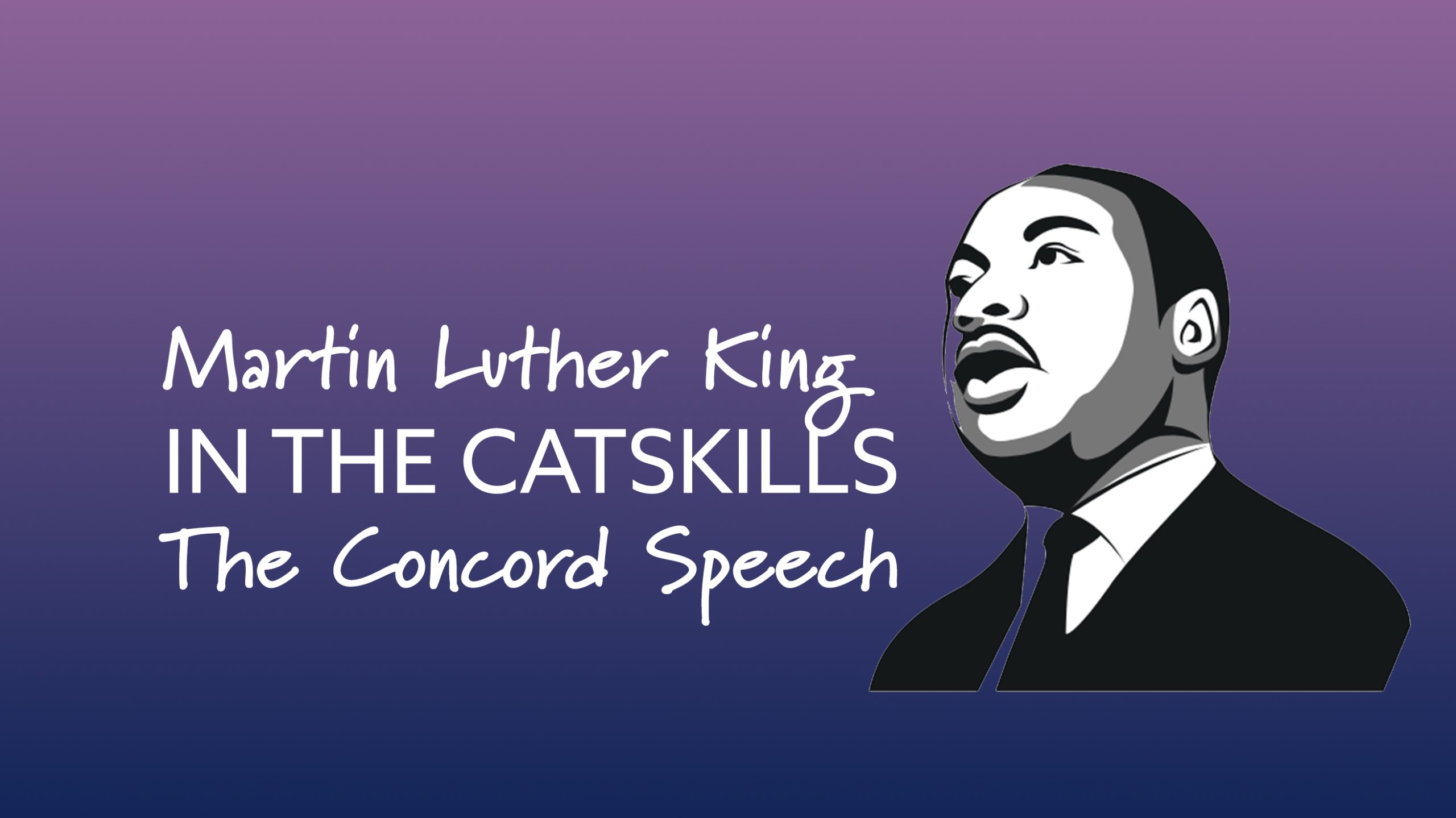by Town Historian Al Dumas
Celebrating Martin Luther King, Junior is so important to American culture, that we have a national holiday to honor this iconic civil rights champion. But how well do you know “MLK”? I’d like to take a look back at key dates and moments that shaped Dr. King’s life, starting with his speech at the Concord Hotel in Kiamesha Lake – just 10 days prior to his untimely death.
On March 25, 1968, Dr. King was invited by Rabbi Abraham Joshua Heschel to a Rabbinical Assembly Convention at the Concord Resort Hotel in Kiamesha Lake. Rabbi Heschel and Dr. King were longtime friends. Rabbi Heschel was a leading Jewish theologian and philosopher who also marched with Dr. King in the Selma to Montgomery march on Sunday, March 21, 1965 (this was the second march; the first attempt on Sunday, March 7, 1965 ended with the beatings of marchers on the Edmond Pettus Bridge in Selma).
The purpose of Dr. King’s visit to the Concord was to address the rabbis on social justice. As Dr. King approached the podium, the audience stood and sang We Shall Overcome in Hebrew. You can read the speeches Rabbi Heschel and Dr. King gave, here – their words are a testament to their mutual admiration and shared goal of eradicating hate and promoting civil rights in America.
Within 10 days, Dr. King was assassinated in Memphis on April 4th, 1968 at age 39. Dr. King had left Monticello to go to Memphis to assist in the Sanitation Strike. The Concord speech was his next to last speech, before making his famous Mountaintop Speech prior to being killed.
At Dr. King’s funeral in Atlanta, Governor Rockefeller and Rabbi Heschel walked alongside his widow, Coretta Scott King. New York Senator Robert F. Kennedy and many other dignitaries attended to pay tribute to the hero of the civil rights movement…Dr. Martin Luther King.
My Overview of Dr. Martin Luther King’s Life
During his journey throughout the nation and the world, Dr. King’s oratory skills and intellect gave many the opportunity to learn and to challenge the power structure in a unique way: by non-violence, which became his signature method.
So where does the story of Dr. King begin? On January 15th, 1929, when he was born in Atlanta. His birth name was Michael, but he changed it to Martin Luther in 1957, after the German Protestant Leader.
Dr. King was a bright and gifted student and graduated from Booker T. Washington High School in Atlanta at 15. He became a collegiate at 15, attending Morehouse College, where he earned his undergraduate degree at age 19. Dr. King then attended Crozer Theological Seminary from which he graduated at 22. Finally, he pursued his doctorate at Boston University School of Theology in 1955, and earned it at age 26. Around this time in Boston, Martin Luther met his wife, Coretta Scott.
It was on December 1st, 1955 when Dr. King’s civil rights career really began. This is when he took up the cause involving the Montgomery Bus Boycott, where Rosa Parks refused to give up her seat on a segregated city transit bus run by the City of Montgomery, Alabama. With the assistance of Jo Ann Robinson, the President of the Women’s Political Council of Montgomery, Dr. King gained media attention to bring civil rights to the forefront of national issues – all in a non-violent manner.
However, violence followed Dr. King throughout his civil rights career. On September 21, 1958 while he signed copies of his book, Stride Towards Freedom, at Blumstein’s Department Store in Harlem, Dr. King was stabbed in the chest with a sharpened letter opener. That incident almost killed him, for it was only an inch from his aorta. He survived – and continued advocating for the rights of Black Americans until his assassination on April 4th, 1968.

